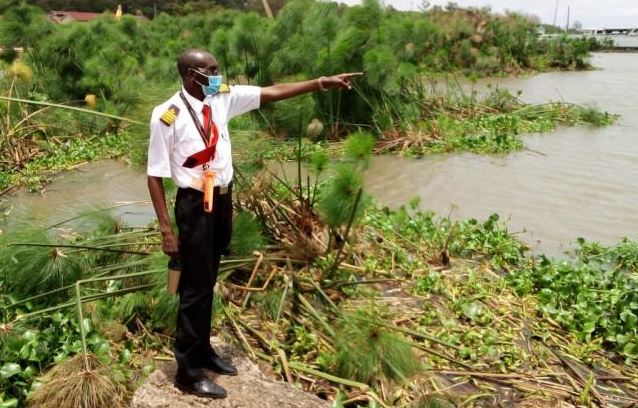
Hippo grass has once again overgrown and covered large swathes of Lake Victoria making it cumbersome for some of the small vessels and boats to navigate the waters.
The aquatic plant has multiplied replacing the noxious water hyacinth weed that initially formed a thick floating mass which also made navigation difficult.
Dr Christopher Aura, a scientist and Deputy Director Freshwater System explained that the hippo grass has grown up to about 200 metres into the shore.
‘’Hippo grass grows on soil and depends on its roots to take up nutrients from the soil especially in wetlands. Then it also grows on the shallow sea bed and depends on nutrients, for its survival,’’ he said.
READ MORE
Scientists explain bacteria behind Lake Victoria's green waters
Kisumu's Sh120 billion waterfront residential project breaks ground
Scramble for 'brown gold' leaves Lake Victoria's shoreline in limbo
Currently, the scientist said, Lake Victoria is excessively fertile, with high nitrogen and phosphorus levels, which serve as fodder for the weed to thrive or grow during the rainy season.
Charles Kitur, Kisumu Port manager told The Saturday Standard that at times, the weed moves downstream, aided by the stormy weather and winds.
According to Dr Aura, the hippo grass, like the water hyacinth, is largely controlled by climate change but manual and scientific methods to control its growth and spread can also work.
"The grass relies on the winds and weather which aids in their extinction as well.
"For instance, the hippo grass when shaken many times by strong winds naturally sinks into the sea bed,’’ he said.
Large vessels also tear into the grass if they block the navigation paths, making it unstable in the lake surface, unlike the water hyacinth.
The State acquired a Sh80 million water hyacinth harvester in 2015 which can also be used to remove the hippo grass.
Despite all these attempts, the water hyacinth has persisted for years.
Water hyacinth is still a great threat to fishing and transportation on the Kenyan side of the lake.
It is also a threat to the livelihood of the those who rely on the lake for their income-generating activities.
The weed covers about 4,000 hectares of the lake, blocking several beaches and paralysing marine transport, fishing and water sports.
Climate change
Aura, also a director at Kenya Marine and Fisheries Research Institute (KMFRI), said the weed flourished in Lake Victoria due climate change and the absence of natural predators such as insects and fish.
"The weed forms thick mass over the water causing obstruction to economic development activities and impacting negatively on the indigenous aquatic biodiversity,’’ he explained.
Yesterday, Mike Osinde, the Kenya Revenue Authority (KRA) assistant commissioner for marine services said some small boats had stalled due to the weed.
‘’When it spreads in the surface of the lake, only large vessels can break their way.
"The small vessels and boats cannot sail through it,’’ he said.
The water hyacinth harvester, he said, cannot be used to cut off the grass because it’s tall and also harbours dangerous sea reptiles.
Osinde said the hippo grass menace would end when the riparian plants that grow on the edges of the lake are curbed by reducing pollution.
Lake Victoria is the largest freshwater lake in Africa and the second-largest in the world after Lake Superior in the Northern United States of America.
It is also the largest tropical lake in the world.

